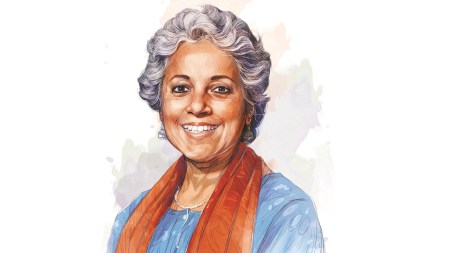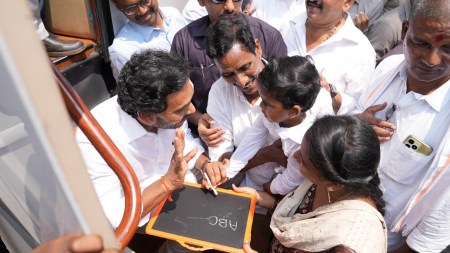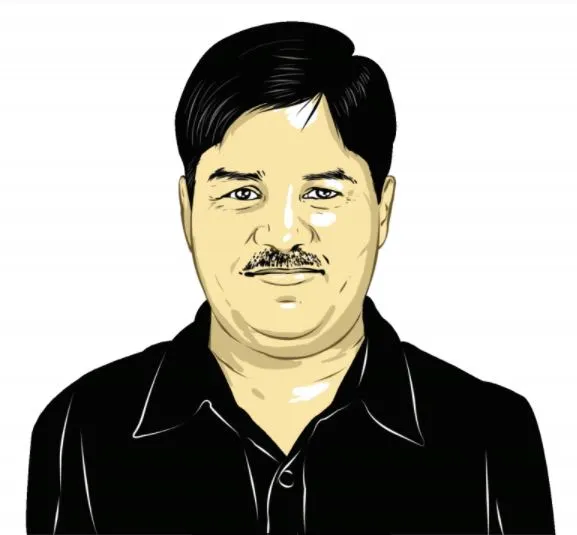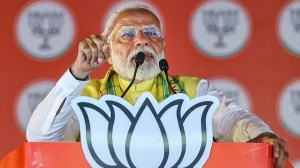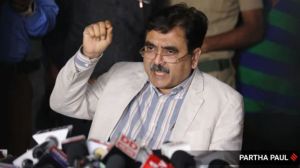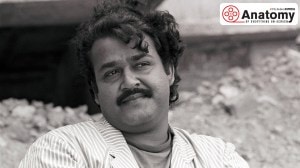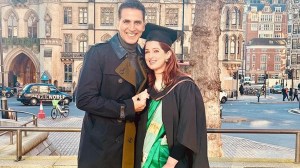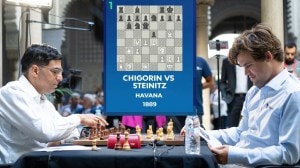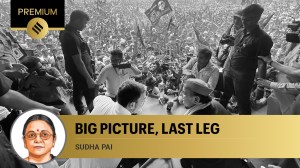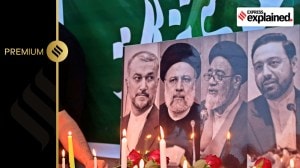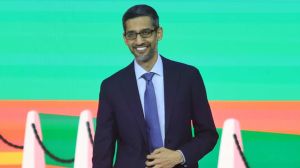- India
- International
How Indira Gandhi returned to power in 1971 Lok Sabha polls, amid political turmoil and Congress split
Indira took oath as Prime Minister once again on March 18, 1971. In the lead up to the polls, there was a split in the Congress party. How did it still manage a victory? Read in part 5 of our series on the history of India's Lok Sabha elections.
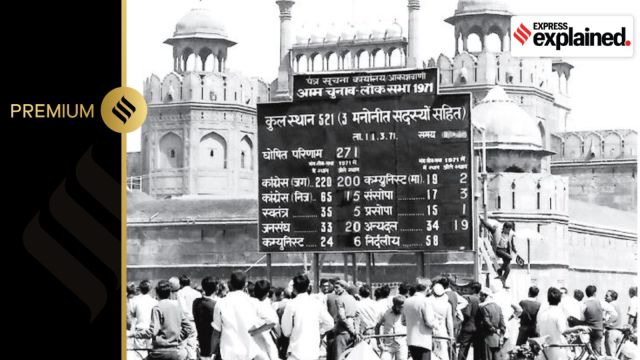 People watching election
results in Old Delhi in 1971. (Photo via PIB)
People watching election
results in Old Delhi in 1971. (Photo via PIB) The fourth Lok Sabha was dissolved late at night on December 27, 1970, almost 15 months before the expiration of its term. In an address to the people of India, Prime Minister Indira Gandhi said “there comes a time in the life of a nation when the government…has to take an unusual step to cut through difficulties in order to solve…pressing problems”.
She wanted to turn the election into a referendum on her social and economic reforms, including the nationalisation of banks, and abolition of the privy purses of former princes. Polls were held between March 1 and 10, 1971.
Split in the Congress party
Even when Jawaharlal Nehru was alive, several Congress leaders had been unhappy with the Kamaraj Plan, which required them to give up government positions and commit themselves to rebuilding the party. Their grievances deepened after Indira manoeuvred her way to the prime ministership after the death of Lal Bahadur Shastri in January 1966, and remained in the post after the 1967 election. The demise of President Zakir Husain on May 3, 1969, provided the circumstances for a faceoff between the rival factions.
The Congress old guard proposed the name of former Andhra Pradesh Chief Minister Neelam Sanjiva Reddy to succeed Husain, while Indira pushed for Scheduled Caste stalwart Babu Jagjivan Ram. Vice President V V Giri too threw his hat into the ring. With the Congress ‘Syndicate’ led by Kamaraj, party president S Nijalingappa, and Atulya Ghosh backing him, Reddy approached Opposition parties like Swatantra Party and Bharatiya Jana Sangh (BJS) for support.
Indira decided to throw her weight behind Giri. In July 1969, she divested Deputy Prime Minister Morarji Desai of his Finance portfolio “without any consultation”, prompting a “humiliated” Desai to resign. Soliciting support from the Communist Party of India (CPI), Indira made a sharp left turn — announcing, on July 19, the nationalisation of banks.

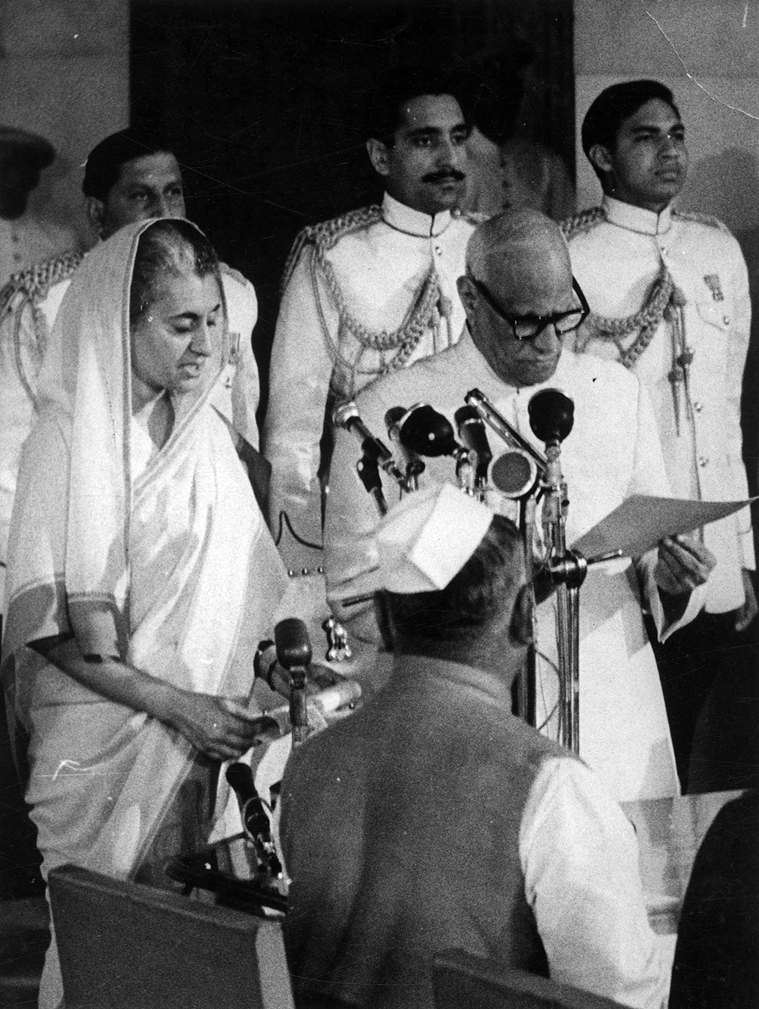 Indira is administered the oath of office by President VV Giri (Express Archive)
Indira is administered the oath of office by President VV Giri (Express Archive)
In the presidential election held on August 16 that year, Giri, who contested as an Independent with Indira’s backing, defeated the official Congress nominee Reddy. The old guard responded by expelling the Prime Minister from the party and, on November 12, 1969, the Congress formally split into the Congress (Organisation) led by the Syndicate, and Indira’s Congress (Requisitionists) faction.
Nijalingappa joined the Congress (O), and this faction continued until 1977, when it merged with the Janata Party. Jagjivan Ram was appointed president of Congress (R).
Political turmoil, a new symbol
On March 25, 1966, Pravir Chandra Bhanj Deo, the Maharaja of Bastar, was shot dead by police. The opposition accused the Congress Chief Minister of Madhya Pradesh, Dwarka Prasad Mishra, of the king’s murder.
While the assassination helped the opposition, especially the BJS, consolidate in MP, the Samyukta Vidhayak Dal (SVD) governments in Haryana, Punjab, Uttar Pradesh, Bihar and West Bengal, ran into a series of crises, which led to mid-term elections in 1968-69. Also in 1968, the opposition lost two of its tallest leaders, Deendayal Upadhyay of the BJS in February, and socialist Ram Manohar Lohia in October.
As Indira Gandhi struggled to establish her faction as the ‘real’ Congress after the split, her minority government faced a no-confidence motion on July 28, 1970. She, however, managed to survive in the House with support from the CPI and some other groups.
Having successfully turned the tide of public opinion in her favour with the nationalisation of banks, and with the CPI and almost 225 Congress MPs with her, Indira decided to seize the moment in an early election. She gave the simple, catchy slogan of “Garibi Hatao” (Let’s get rid of poverty), which resonated widely.
Even as the two factions of the Congress fought to retain the party’s original symbol, ‘two bullocks with a yoke’, President Giri dissolved Lok Sabha. On January 11, 1971, the Election Commission of India (ECI) decided that the Jagjivan Ram-led Congress, supported by Indira, was the ‘real’ Congress. However, the Supreme Court stayed the order, and ruled that neither group would get the symbol of the undivided party. On January 25, 1971, the ECI allotted ‘Charkha being plied by woman’ to Congress (O); ‘Calf and cow’ to Congress (R).
Massive violence, Indira’s return
The fifth Lok Sabha election was conducted by Chief Election Commissioner S P Sen Verma, who had replaced K V K Sundaram in October 1967. According to the ECI, 27.31 crore people voted for 518 seats at 3.42 lakh polling stations across the country. The political turmoil after 1967 had disrupted election schedules, and Assembly polls were held in only three states — Orissa, West Bengal, and Tamil Nadu.
There was unprecedented violence and murders of several candidates in West Bengal, where four Assembly elections were held in five years — 1967, 1969, 1971, and 1972. In Bihar, there was “booth-capturing by mobs of hooligans and goondas armed with lathis, rifles and other lethal weapons”, the ECI said in its report on the election.
Counting started everywhere except West Bengal on March 10, 1971, and results were declared by March 15. Indira rode her ‘Garibi Hatao’ promise to a two-thirds majority of 352 seats. The CPI(M) won 25, CPI and DMK won 23 each, and the BJS won 22 seats.
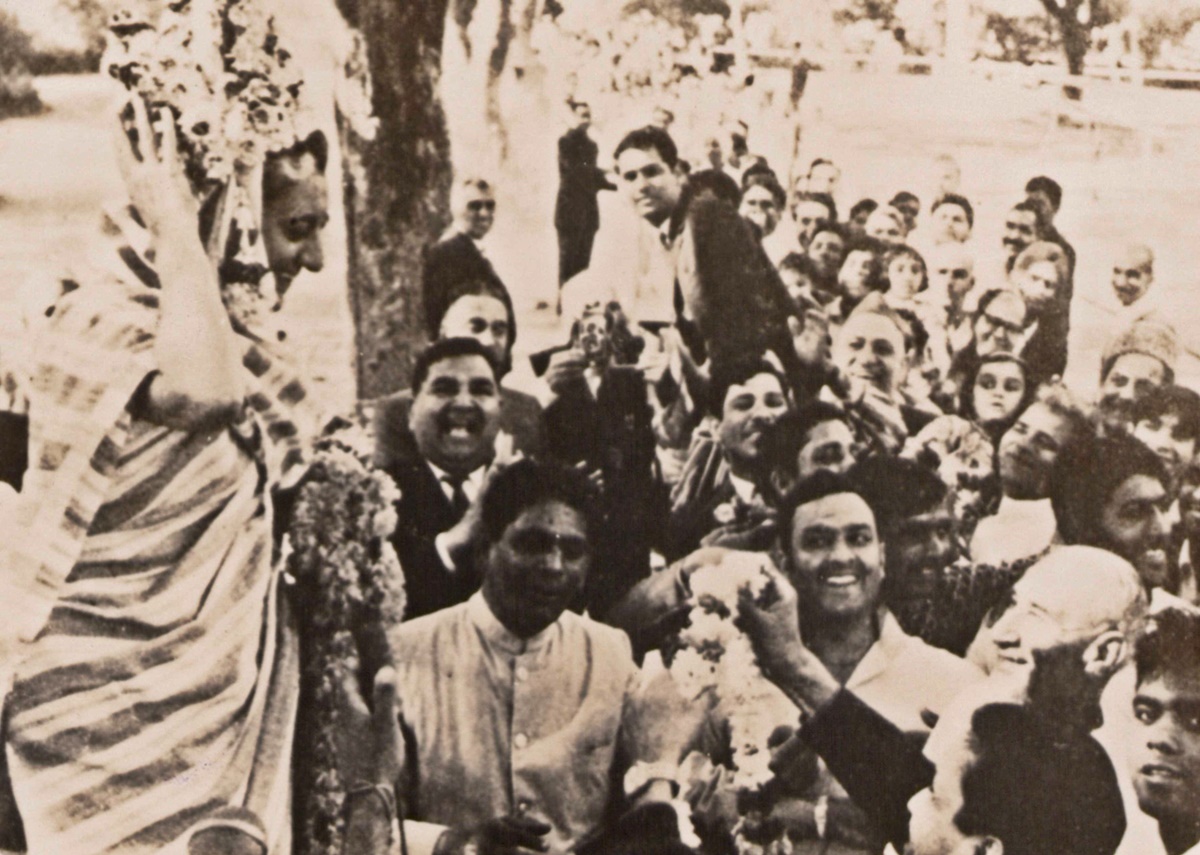 Indira acknowledges greetings from people on her victory in the election of 1971. ‘India: The Decades of Development (1947-87)’ an exhibition held at Teen Murti House, August 1987. (Photo via PMML)
Indira acknowledges greetings from people on her victory in the election of 1971. ‘India: The Decades of Development (1947-87)’ an exhibition held at Teen Murti House, August 1987. (Photo via PMML)
There were several prominent losers: Chaudhary Charan Singh, who had left the Congress in 1967 to form the Bharatiya Kranti Dal, lost in Muzaffarnagar; Mahant Avaidyanath, guru of UP Chief Minister Yogi Adityanath, lost in Gorakhpur; and Sucheta Kripalani, wife of J B Kripalani, lost as the Congress (O) candidate from Faizabad (now Ayodhya).
Among the prominent winners were BJS candidates Vijaya Raje Scindia (Bhind) and her son Madhavrao Scindia (Guna), and Atal Bihari Vajpayee (Gwalior). Swaran Singh won from Jullundur (now Shaheed Bhagat Singh Nagar), Karan Singh from Udhampur, A K Gopalan of the CPI(M) from Palghat, Madhu Dandavate of the PSP from Rajapur, V P Singh, who would become Prime Minister later, from Phulpur, and H N Bahuguna, who would become UP Chief Minister, from Allahabad. Indira herself defeated Raj Narain by a large margin of more than 1 lakh votes.
Indira took oath as Prime Minister once again on March 18, 1971. In December that year, the Indian Army handed Pakistan a crushing defeat in war, which led to the birth of Bangladesh. Indira’s popularity was at its peak.
The first big blow to the Prime Minister came on June 12, 1975, when the Allahabad High Court found her guilty of electoral malpractice and misuse of state machinery, and declared her election from Rae Bareli invalid. Less than two weeks later, on June 25, 1975, Indira announced the Emergency — an action that would change politics in India forever.
More Explained
EXPRESS OPINION
May 21: Latest News
- 01
- 02
- 03
- 04
- 05



